A sewer riser is a vertical pipe in the bathroom where waste from plumbing fixtures from around the house flows. As a rule, the bathroom, toilet and kitchen in apartments are located nearby, which makes it possible to create a common sewer line for all plumbing. In this case, the sewerage system in a multi-story building has a minimum length, which is significant for a gravity sewer system. If there are problems with waste drainage, in 90% of cases this is due to a malfunction of the riser.
Service life of heating risers in an apartment building
Features of connecting to the wiring on the topic Replacing a riser: legal aspect A water riser is a vertical section of pipeline equipped with a shut-off valve at the base.
It is common property. Threaded and steel connections are necessary for the installation of galvanized steel pipes; as practice shows, it is more practical to produce them by welding. It is worth remembering that when welding a galvanized pipe with conventional electrodes or simply welding wire, it is necessary to remove the galvanized layer from the place where the welding will be performed and the pipes must be overlapped with each other. Since these layers are subject to evaporation and after welding is completed, some places remain for moisture to penetrate. After welding is completed, it is imperative to treat the joints with an anti-corrosion primer. The same thing is worth remembering when working with threaded joints, because they also tend to deteriorate under mechanical stress and the zinc layer is destroyed just as easily. Timing for replacing risers in an apartment building snip Pipes for internal sewerage and a diagram of the installation of an anti-noise riser The best material for internal sewer pipes is PVC. Due to their smoothness, PVC pipes are least susceptible to clogging with solid waste. WATCH THE VIDEO ON THE TOPIC: At whose expense should the pipes in the apartment be updated?
What to do to avoid flooding your neighbors
The electricity meters in the apartment must be changed by the owners themselves, and on the landing - by the management company. Balcony repair The issue of balcony repair is controversial. After all, it partly belongs to the owner of the premises - the parapet, the roof, the canopy, and partly the housing and communal services - the protruding slab and load-bearing wall. Accordingly, what is broken is repaired by those who own it. The owner's responsibilities include: Strengthening the parapet. Replace window frames, broken glass, damaged doors. Remove rust and mold. Paint the façade and balcony ceilings with a special anti-corrosion compound. Monitor the condition of external fasteners.
Repair of sewer system riser
Repair of the sewer riser should be done with the passage of the ceiling between floors, because these places are the most vulnerable in this system. If this cannot be done, then a tie-in is made from the ceiling to the floor.
Stages of repairing a sewer riser:
- Dismantling: on each floor a hole is made around the pipe, through which, starting from the top, the old pipes are pulled out.
- Next, a new sewer system is installed, starting from the bottom.
- The sewer pipes are inserted into each other and secured with a rubber ring, which compresses them tightly and prevents them from being separated.
- The highest point of the sewer riser should be located in the attic.
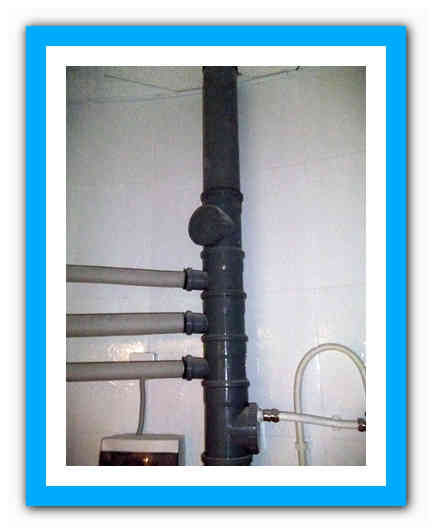
We invite you to learn more about the process of replacing risers by watching the video below:
Who is responsible for the risers in an apartment building?
Rules for the maintenance of common property MKD No. 491 (clause 6) determine that the intra-house heating system consists of a set of risers, heating elements, control and shut-off valves, collective (common house) heat energy metering devices, as well as other equipment located on heating networks. On the issue of ownership of the heating elements of the heating system (radiators), the Supreme Court of the Russian Federation expressed its position in its decision dated September 22, 2009 No. GKPI09-725: the court decided that any technical equipment of an apartment building can be classified as the common property of an apartment building only when it serves more than one residential or non-residential premises. Consequently, heating radiators located inside one apartment may not be considered common property.
Responsibilities of the management company
Owners of housing in an apartment building transfer funds monthly for the provision of utilities.
The amounts sent to the management company usually provide for the following types of work:
- property maintenance;
- maintenance of communication networks;
- elimination of emergency situations;
- current and major repairs.
The common sewer riser belongs to the common property of the house, therefore responsibility for its maintenance lies with the management company.
The management company is obliged to monitor the condition of all communication systems and their individual elements. If there is a malfunction, representatives must replace parts, even if they are located on the premises.
Water pipes are branches from risers. The responsibility for their repair and maintenance lies with the property owners.
The riser itself is used for several apartments, so it is classified as common property.
Replacing the sewer riser in an apartment is the responsibility of housing and communal services
Sometimes they refuse to carry out major repairs, explaining that there are debtors among the owners who have not made payments for their services. This basis is not a legal reason for failure to fulfill the duties of the Housing Office. Who pays for the replacement of risers Apartment owners contribute monthly funds for maintenance and repairs.
That is why all capital work, including replacing the riser, is carried out without raising additional money from the owners. The apartment owners already paid for the repairs. If the housing office offers residents to independently raise money for capital work, then this is illegal.
Apartment owners in such a situation can complain about such actions to the prosecutor's office or to the court.
At whose expense are the risers in the apartment replaced?
This question arises quite often among apartment owners, however, the answers to it among practitioners are ambiguous. On multiple Internet sites, users try to find a definite answer, although it practically lies on the surface.
One group of people believes that payment should be made at the expense of residents, others talk about payment by persons who independently express their desire, others say that replacement is carried out at the expense of developers, optimists talk about free provision. In this article we will try to find the truth.
How to replace risers in an apartment
Initially, you need to contact the management company and provide an application for changing the risers. Persons must provide a compelling justification for the replacement in the application, as well as provide evidence (for example, photographs or an expert opinion).
The application is drawn up in two copies, the first of which is given to the accounting department or department accepting applications, the next copy serves as evidence that the application has been accepted, so it must be signed by the person who accepted it.
In cases where the application is drawn up correctly and the facts indicated in it are legal, the Housing Office is obliged to carry out the appropriate work in the near future. Otherwise, the person will receive a refusal paper with explanations on what grounds the application is withdrawn.
If a person does not agree with the refusal, he should file an appeal to the prosecutor’s office, attaching all the documents in the applicant’s hands. It is also not prohibited for homeowners to replace risers without obtaining the appropriate permit. The person also has the right to take the initiative to replace the risers.
The sequence of steps for replacing risers is explained in the following instructions:
Writing an application to the housing office, in which the person expresses his desire to carry out such a replacement in his home. It must also indicate how the replacement will be made: with your own hands or with the help of another company. In such cases, the housing office issues permission to carry out this work and indicates the date and time period during which the replacement can be carried out
It is necessary to pay attention to the fact that disconnecting the risers is an expensive service, and the amount of money is deposited into the account of the management company. It is necessary to prepare a set of tools and materials in advance, in which case the work will be accelerated. A complete set of tools must be ready before work begins.
It is also necessary to gain access to neighbors living above and below to organize the work.
Design Guidelines
It is strongly recommended not to do the following:
- carry risers and modify them;
- cover them with static structures (gaining access to the riser is carried out along its entire length);
- operate small plumbing hatches that are not convenient during operation.
Who should replace the risers in a building with several apartments? At whose expense are such repairs carried out?
When buying a living space, the new owner does not always think about the problems that he may encounter. Thus, in apartment buildings older than 30 years, problems often arise with the water supply and sewerage systems; pipes and risers leak. It will not be possible to fix the damage within one apartment. Purchasing new plumbing fixtures may be completely useless, since risers need to be replaced. Who should replace the risers in a building with several apartments, and at whose expense should the work be carried out?
Law
In 2006, the Russian Government adopted Rules that formulate the procedure for maintaining common property. This act discloses the concept of “common property” by accruing those objects that belong to it. Among others, equipment serving more than 1 living space and a drainage (sewage) system are noted.
Who is responsible for replacing common property? To answer this question, you need to separate two concepts - current and overhaul. The first is carried out by the efforts and resources of apartment residents. The current renovation takes into account the implementation of the following types of work:
- painting floors, doors;
- replacement of door and window openings;
- repair of utility networks that are located in the middle of the apartment;
- other types of work.
Major repairs are carried out by the management organization. The implementation of repair work that is needed to maintain water supply, sewerage, and heating risers in good condition is the responsibility of the housing office or another company with which a suitable agreement has been concluded.
Responsibilities of the owners of the living space
According to existing legislation, the decision to carry out major repairs is made by all apartment owners. But they cannot do such work personally. Property owners only service the equipment that is in their apartment; read the statutory rules for installing water meters.
In order to carry out repairs to common property, a management company is hired and given some of the powers.
Responsibilities of the Housing Office
The housing office or another organization entrusted with the responsibility for the maintenance, replacement and repair of common building equipment in a building with several apartments carries out the necessary work based on the plan for its implementation.
Good to know! The owners themselves can contact the authorized company with a statement indicating the need to consider replacing the riser. Such an appeal is subject to consideration. The housing office is obliged to provide its own response in writing.
In fact, such organizations do not always fulfill their duties honestly and on time. Sometimes they refuse to do major repairs, explaining that there are debtors among the owners who have not made payments for their services. This basis is not considered a legal basis for failure to fulfill the duties of the Housing Office.
Who pays for the replacement of risers
Apartment owners contribute funds for maintenance and repairs every month. That is why all capital work, including replacing the riser, is carried out without additional involvement of cash from the owners. The apartment owners already paid for the repairs.
If the housing office offers residents to raise cash on their own to carry out serious work, then this is illegal. Apartment owners in a similar situation can complain about the same actions to the prosecutor's office or to the court.
Good to know! If the need for repairs arises because of the owner of the living space, whose actions caused changes in the common building structures, then he himself will pay for the repairs. Read about who should change the electric meter in an apartment here.
Who should replace risers in a multi-apartment building?
The obligation to carry out pipe replacement work depends on where they are located and how many apartments they serve. If they are located in the middle of a residential premises, then the repairs are carried out at the expense of its owner.
The work will be carried out either by the management organization or by an outside company. In both cases, replacement is carried out on a reimbursable basis.
So, the riser belongs to common property, the replacement of which is considered the responsibility of the management organization. All work is carried out at the expense of the owners, who must transfer funds every month for the maintenance and repair of this equipment. This is precisely why the management company’s attempts to illegally collect auxiliary funds from residents are illegal.
Conflicts when replacing risers
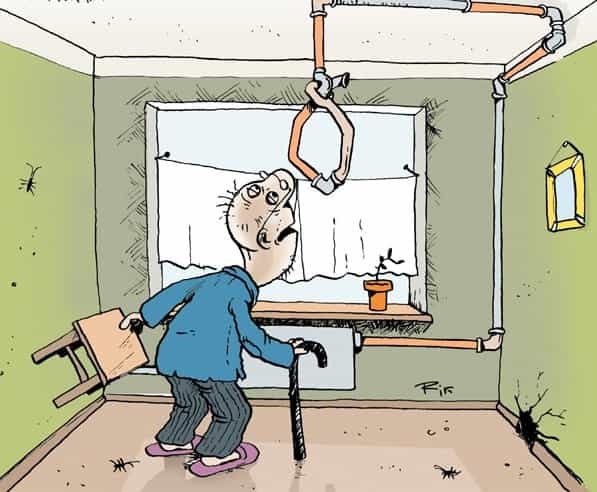
Privatized housing is the private property of its owner. Utility workers believe that if the riser is located in such an apartment, then the replacement process is carried out by the property owner at his own expense. But this is not so, the water supply risers in an apartment building are part of the engineering structures, and all work is carried out at the expense of the management company, which collects contributions for this.
Employees of the management company refer to the Methodological Recommendations of MDK 2-04-2004, which states that management companies can change engineering communications, but there is not a word about risers.
Major repairs involve eliminating all faults in engineering structures in an apartment building, and for this it is necessary to replace pipes and risers of drainage and water supply systems.
Before major repairs are carried out, all owners of privatized apartments should be gathered to clarify the issues of who should change the sewer riser and who should repair the riser. At the same time, replacing water supply risers in an apartment is the responsibility of the management company, which collects money for this monthly, and considerable money at that.
Who should repair the riser and at whose expense?
Planned work to replace risers should be carried out at least once every 25–35 years. Risers are part of the general building communications; if they have become unusable as a result of aging, then their repair and payment must be made by the management company, because the monthly rent includes the amount that should go to the maintenance of risers, pipes and other components of engineering systems. If the residents of a particular apartment decide, on their own whim or as a result of improper operation, to repair the riser, then they must pay at their own expense.
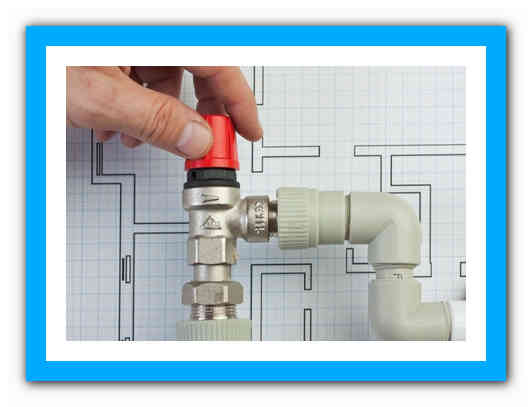
As for municipal houses, they are the property of the city administration, therefore repairs of risers in municipal apartments are carried out at its expense. If repair work is necessary, you need to write a statement and send it to the city or district administration, and they, in turn, send a request for repairs to the management company.
If the engineering systems that require repairs are privatized, then all residents of the building will have to pay for this repair.
Well, and, of course, if the house is private, then no one other than its owner should bear the costs of repairing any engineering systems. Therefore, the owner himself must look for workers who will carry out repairs and pay for their work.

If those responsible for the condition of the risers of a particular engineering system strive to evade their duties, then the repair problem can be solved in two ways:
- First, you can write a statement and send it to the management company; if there is no response to it, then you can send a complaint to the housing department. Most often, these measures are sufficient, but if the problem still cannot be solved, then you can go to court. This process is quite long and requires a lot of patience and strong nerves.
- Purchase the necessary materials and pay for the plumber’s work out of your own pocket. This method is more expensive, but at the same time faster and simpler.
At whose expense is work carried out in the apartment and entrance?
Replacement of old and leaky risers is carried out at the expense of the owners of the apartment building. They are the ones who bear the financial burden for the maintenance of common property. Money for repairing communications will be taken from their utility payments, which the management company collects monthly for the maintenance of the house.
In the utility bill there is a separate expense item “Maintenance and repair of housing” - this is the money that should go to replacing the old riser pipe. If there is a major replacement of the entire pipe in the entire house, then these are other funds, and they are taken from the residents’ payments under the heading “Major repairs”.
When replacing here and now, you don’t need to pay anything - the resident already contributes money every month to replace the public pipe, and the management company employees have no right to demand that he pay for the work or pay additional expenses.
An exception may be the personal fault of the apartment residents. If they are responsible for a sewer break either intentionally or through negligence, then they will have to shell out money for repairing a bad pipe out of their own pocket.
It is important to note that money will be paid from the general fund only for the repair of pipes that have long exhausted their reserves or are in disrepair.
If the owner of the apartment wants to deal with the riser for his own personal reasons - for example, if he is undergoing redevelopment - then he will pay for the work from his own funds, and not from the “utilities”.
The situation is completely different for owners of non-privatized public housing, which is in municipal ownership. The citizen registered in it is considered a tenant, not an owner, and the landlord, the municipal authorities, is obliged to pay for the repair of the risers.
Who is the master of the pipes?
An apartment building is a complex object not only from a technical point of view, but also from a legal point of view. The proximity of different interests gives rise to many conflict situations, most of which relate to the management and maintenance of common property.
According to publication 36 of the Housing Code of the Russian Federation, common property in a house with several apartments includes all parts intended to serve more than one room. This is discussed in more detail in the “Rules for the maintenance of common property in a building with several apartments”, approved by Government Decree No. 491 of August 13, 2006. Thus, the common property includes:
- foundation, roof, enclosing load-bearing and non-load-bearing structures of a house with several apartments;
- premises that are not parts of apartments and non-residential premises, intended to serve more than one room in this building;
- technical communications and equipment (electrical, sanitary, etc.) outside the boundaries and in the middle of the building, serving more than one room;
- a plot of land with landscaping and improvement components;
- other objects intended for the maintenance, operation and arrangement of this house located on this land plot.
Technical communications and equipment are recognized as the common property of the owners if there is a single, but most important feature - maintenance of more than one premises. Riser pipes, branches from them, communal meters, shut-off and control valves, sewer outlets, plugs, etc. - all this is in the common ownership of the residents of a building with several apartments.
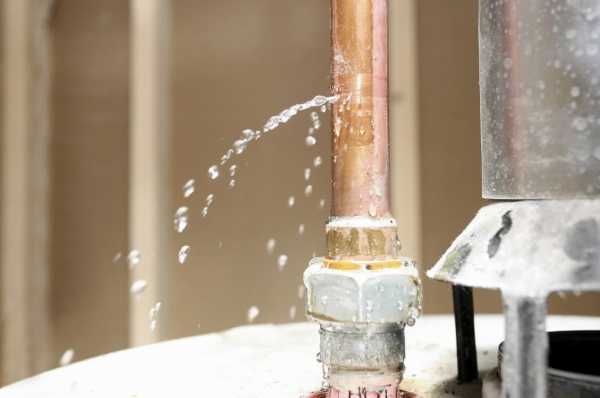
Now let's imagine the situation. You live in a house with several apartments on the top floor. The neighbors on the floor below had a burst cold water supply - residents living even lower are flooded. There are no difficulties in your apartment, everything is dry and in good order. However, the residents of the apartment from which the leak is occurring are asking for repairs to be made to the common property, which means replacement of the plumbing equipment in your home. Is this legal?
At first glance, yes, completely. After all, as we have already found out, risers are common property, which means, according to existing legislation, residents bear the burden of maintaining it in proportion to their own shares in the right of common ownership of this property. In this case, it does not matter what form of management is used in relation to this house with several apartments (management organization, HOA, housing cooperative, etc.) - the owners make contributions for repairs under any circumstances.
There are several types of repairs: current and major. The first is one in which work is carried out as planned with the aim of replacing or restoring individual parts and engineering systems of the house (for example, replacing part of a rusted pipe in the basement). The second involves the replacement or restoration of individual parts or entire structures and engineering equipment of a building due to their physical wear and tear or destruction, and even if modernization is required. Overhaul can be aimed at replacing one component of the engineering system, or several - due to this, it is divided into comprehensive and selective. Replacing risers mainly refers to selective overhauls.
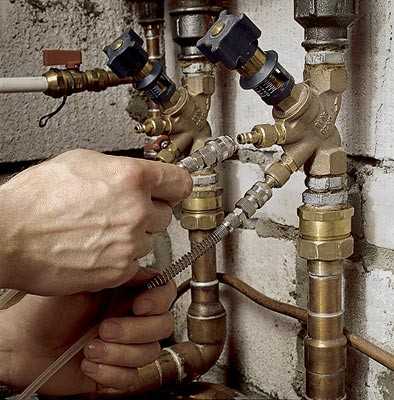
Current repairs are carried out at the expense of management organizations, while capital repairs are paid from the owners’ pockets. Therefore, in order to do it, you need to convene a general meeting of residents, at which a decision on repairs is made, its scope and estimated price are established. Therefore, in the above example, the conditions of the residents of an apartment with a broken riser are legitimate, provided that a general meeting of the residents of this building was held, and 2/3 of them agreed to make major repairs to replace the risers.
However, approaching this curiosity in more detail, let's remember the main criterion for classifying engineering buildings as common property - they must use more than one room. In other words, the cold water supply riser is considered common property, but the pipes that go from it are located in an individual apartment and serve only that apartment - not. This is already the property of the residents of this apartment. Repair or replacement of pipes in the apartment is carried out at the expense of the owner. Similarly, no one has the right to demand the replacement of pipes and other plumbing equipment, if they are in working order and do not belong to the common property in your apartment.
Procedure
If an urgent need arises, the first thing you should do is contact the management company or housing office. You need to write an application to replace the risers, indicating a good reason and attaching at least 2 photographs of communications. The document is executed in two copies, one remains in the housing office, and the second with a mark of acceptance must be taken with you
To accept and consider the application, it is important that the homeowner be a bona fide utility payer
The following scenarios are possible:
- The repair team quickly responds and replaces the emergency riser. The owner of the living space, in turn, provides access to the bathroom for unhindered repair work.
- The management company refuses to replace the vertical pipeline, citing the fact that the pipeline is located on the owner’s premises and the owner of the apartment is responsible for it. In this case, you receive a written response with a refusal. You can then go to court with this document, but the process often drags on for several months.
When should replacement be carried out?
The service life of sewer risers in an apartment building is up to 30 years. This period is determined by the material of their manufacture; previously risers were installed from cast iron.
Modern sewage systems are installed from pipes, for the manufacture of which materials with a longer service life are used. Therefore, their service life is quite long.
Many homes still use outdated cast iron systems whose service life has long expired. During this time, the metal began to deteriorate, and sewer risers and pipes may leak. You should not wait for flooding, which will lead to the need for repair work in several apartments.
Residents of the house have every right to contact the Management Company and raise the issue of replacing sewer risers if their service life has expired. The work must be carried out at the expense of the company, to which residents make contributions under the heading “maintenance and repair of the house.”
Replacement must be carried out as soon as possible under the following circumstances:
- When the collector falls into disrepair.
- When the riser is destroyed due to metal corrosion.
- If an old cast iron pipe exerts strong pressure with its weight on a metal-plastic riser in the apartment below or on the floor above.
Plumbers who service an apartment building always recommend changing the riser on all floors so that it is solid and more reliable.
If cast iron begins to deteriorate in one apartment and leaks appear, after a short time residents of apartments on other floors will encounter the same problems. Therefore, it is worth finding an opportunity to carry out replacement work at the same time. A collective application will only speed up the time it takes to complete the work.
What to do if an accident occurs during the heating season
Who is to blame if the heating riser breaks? If you detect internal breakthroughs: flooding of basements, stairwells or entrances, you should immediately call the emergency service. A telephone call recorded by the operator is actual evidence of a breakdown. The arriving specialists will stop the water supply. Replacing the heating risers in the apartment in this case is the responsibility of the management company (MC).
If the accident happened directly in the apartment, then you need to:
- Find out where the water comes from. The location of the coolant leak may be one or several floors above.
- Report the accident to the Criminal Code.
- Turn off the electricity.
- Call a plumber and help him stop the flooding (provide access to the apartment).
- Notify the insurance company (if the apartment is insured).
- Draw up a flood report together with representatives of the management company and neighbors and sign it. The report must contain detailed information about the location of the breakthrough and the extent of the damage caused. If the cause of the leak is incorrectly stated on the document or is difficult to determine, note this in writing. Sometimes independent expert opinion is required to identify the root causes of flooding.
- Capture the damage with a camera, mobile phone or video camera. If the case comes to trial, additional evidence will not hurt. Filming begins from the street so that the entrance to the building is visible. Witnesses are welcome; they can be asked to sign the Record of Survey.
- Schematically depict the flooded premises and the damaged section of the pipeline.
- Invite a specialist to assess the damage.
The components of the indoor heating system are:
- pipes,
- risers,
- connection points (threaded),
- radiators.
Important! Unauthorized modification by the owner of any part of the heating structure makes him responsible for their technical condition. Before changing pipes or batteries, it is recommended to write an application for replacing the heating riser, take it to the management company and obtain written permission
Before changing pipes or batteries, it is recommended to write an application for replacing the heating riser, take it to the management company and obtain written permission.
Management company employees must regularly carry out technical inspections of the heating system in apartments and issue a corresponding report.
What are utility workers required to do?
In accordance with the general rules for maintaining property in an apartment building, full responsibility for the technical condition of communal risers rests with the management company, and in its absence, with the housing office. Residents must know that responsibility ends only at the section of pipe where the first drain valve from the riser is located.
The basis for carrying out work to restore the functionality of the risers will be:
- planned implementation;
- an act confirming that part of the riser requires repair to prevent an accident;
- leak or other problem.
In the apartment
Repair and replacement of sewerage in an apartment lies entirely on the shoulders of the property owner and is not the responsibility of utility services. The owner can independently change the heating risers in the apartment by hiring a third-party company that can take on this responsibility, or use the services of housing and communal services specialists.
If it is not the pipes that need to be repaired or replaced, but the vertical risers, the housing office takes responsibility.
At the entrance
The maintenance of communication risers at the entrance must be fully undertaken by the housing office. But in practice, utility workers are not always willing to do this work. They often find reasons to shift responsibility onto the residents of the house.
To avoid such a situation, it is necessary to contact the management company not verbally, but in writing.
Replacing risers in an apartment building, who should do this?
It cannot be ruled out that the hired specialists will do the work poorly, then the “piece of paper” will again help solve the problems that arise in this regard. It is also worth remembering that if public utilities agree to change the risers, then the owners of apartments in the entire entrance will have to pay for it. However, sometimes the management company may refuse to replace pipes with good reason. So, if the owner of an apartment is renovating and decides to move the pipes in the bathroom because they interfere with the implementation of design ideas, he should do the transfer of communications himself. But if there are “leaky” places and traces of corrosion, then you need to contact the Housing Office. By the way, its specialists may agree with your arguments that the pipes are worn out, but they will not replace them, but simply “patch them up.” Namely: they will put a clamp on the defective area. There are apartments where you can see 5-6 such patches on one pipe.
How to replace a riser
Any apartment building must have risers:
- heating systems;
- sewerage;
- supply of hot and cold water.
In order to change the riser, it is necessary to carry out the following work:
- shut off the water for repair or replacement. In this case, you need to wait until the water flows through the pipes. If the sewer riser in an apartment is replaced, the employee of the management company who is responsible for this warns the residents of the entrance not to use the bathroom during this time;
- dismantle pipes that need to be replaced. Such work requires professional locksmiths who can easily remove them from the ceilings between floors. This is difficult work, especially when removing cast iron pipes;
- install new pipes. After this, you need to check the water pressure and confirm that there are no leaks.
It is best to change the sewerage, heating and water supply risers simultaneously throughout the entire house. This will prevent leaks and accidents that can occur when replacing structures only in individual apartments, and thus make repairs cheaper.
Replacing heating risers in a residential apartment building is basically the same everywhere. But there are some nuances. When carrying out repairs, you must perform the following steps:
- inform the management organization that it is necessary to turn off the water supply. Without appropriate information about the location of the distribution valve, it will not be possible to shut off the water;
- when changing radiators, shut-off valves should be installed, which in an emergency will allow you to turn off the water only in a separate apartment;
- When changing pipes, it is not recommended to reduce their diameter, because under pressure they will burst, especially during the heating season. And this will lead to unpleasant consequences.
When replacing a water riser, choose the optimal type of pipe. So, for supplying hot water, the best option would be a reinforced plastic pipe that will not undergo deformation at high temperatures.
If the pipes are not replaced in the entire house, but only in a separate apartment, the mechanic cuts the pipe before the ceiling, from above and from below. Then he must install special fittings.
If pipes are replaced throughout the entire house, pipe dismantling begins with apartments located on the top floors. At the same time, they are beginning to install a new riser in the lower apartments.
Who changes risers in an apartment building, procedure
A significant number of our country’s population are residents of multi-storey buildings that were built since Soviet times. According to the technical standards of that period, products made of cast iron and steel were used for the installation of intra-house pipelines. The materials are durable, but are susceptible to corrosion, rotting and, as a result, require replacement.
Who is responsible for this in a multi-story building?
Apartment residents, in order to prevent the consequences of unpleasant situations, often reinstall risers and branches at their own expense. However, this is not entirely true.
According to Art. 161 of the Housing Code and Decree of the Government of the Russian Federation No. 354 of 05/06/11 (Article 149), repairs and replacement of risers are entirely the responsibility of the housing management company. The apartment owner pays monthly bills, in particular for “maintenance and repairs.” All work related to communications must be performed for these funds. In the event of an accident, the housing office must update the pipes, and collecting money from people is illegal.
Who pays for the replacement in a privatized apartment?
As a result of the privatization process, not only living space, but also metering devices, plumbing equipment, and communications become property. This is confirmed by Art. 36 Housing Code of the Russian Federation and Government Decree No. 491 as amended. dated March 26, 2014. The owner has the right to dispose at his own discretion:
- replace metal pipes with plastic ones;
- install new plumbing fixtures, stopcocks, meters;
- change radiators.
However, with regard to common risers connecting several floors, the issue is controversial. Vertical pipelines can be located in special shafts or pass through the apartment. Placement is not of fundamental importance. Owners of both privatized and non-privatized apartments make regular payments, due to which the management company carries out maintenance and replacement of pipes. The owner is obliged to carry out repairs only of intra-apartment branches from the riser.
Procedure
If an urgent need arises, the first thing you should do is contact the management company or housing office. You need to write an application to replace the risers, indicating a good reason and attaching at least 2 photographs of communications. The document is executed in two copies, one remains in the housing office, and the second with a mark of acceptance must be taken with you
To accept and consider the application, it is important that the homeowner be a bona fide utility payer
The following scenarios are possible:
- The repair team quickly responds and replaces the emergency riser. The owner of the living space, in turn, provides access to the bathroom for unhindered repair work.
- The management company refuses to replace the vertical pipeline, citing the fact that the pipeline is located on the owner’s premises and the owner of the apartment is responsible for it. In this case, you receive a written response with a refusal. You can then go to court with this document, but the process often drags on for several months.
Work order
When replacing pipes, it is important to first discuss the situation with your neighbors, otherwise the tie-in is carried out only from the ceiling to the floor. Sections of the old riser will remain in the ceiling, which in the future can lead to leaks in these places
It is also impossible to do without the participation of representatives of the management company; they shut off the riser and drain the water. After which the pipelines are replaced in the following sequence:
- using a grinder, dismantling is carried out, pulling out old pipes from the floor slabs;
- make markings for inserting branches;
- install new pipelines and wiring;
- Connect the water and check all connections for leaks.
Advice: it is better not to change sewer risers yourself; the entire system may fail.
Pipes for hot water supply and heating systems are selected on the condition that they do not deform under the influence of heat. Polypropylene pipes are in demand today and have a number of advantages:
- resistance to corrosion;
- efficiency;
- ease of installation;
- absence of internal limestone deposits;
- environmental friendliness.
According to the law, planned reinstallation of central highways is carried out every 25-30 years. House networks, intra-apartment heating pipes, and water supply to non-privatized apartments are subject to this scheme.
How to properly dismantle the riser?
Before installing a new section of sewer pipe, you need to dismantle the old one.
There are two options:
- the work does not affect floor slabs;
- replacement is carried out with the capture of the area between the floors.
The procedure for dismantling the pipe itself is no different in both cases. The difference lies in the need to open the interfloor ceiling before dismantling the pipe in the second case.
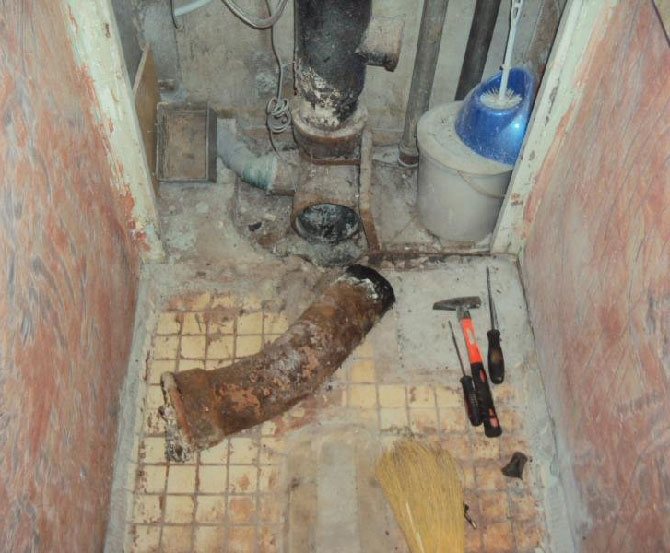
Algorithm for dismantling the sewer riser:
- At a height of 1 m at least from the adjustable fittings, an incision is made on the cast iron pipe with a grinder and the section is removed from the lower socket.
- If the pipe cannot be loosened using a nail puller or chisel, you can try heating it to soften the old sealant.
- The riser is analyzed from top to bottom, from connection to connection.
We recommend that you read: Purpose and use of corrugated pipes
The opening of floor slabs between floors will need to be agreed upon with the neighbors. Dismantling of ceilings is carried out either with a hammer drill or using a crowbar, chisel and hammer.
Note! Work should be carried out without strong impacts, using rocking, heating, and gentle tapping. Excessive physical impact on a cast iron riser can split it.
Who should pay for replacing water supply risers?
Since the amount of monthly contributions that all owners of premises in an apartment building are required to pay has been determined, there is no need to pay any additional funds for major repairs and replacement of risers. Let us remind you once again that the owners include:
- apartment owners on property rights, privatization;
- municipal authorities regarding public housing premises.
All of them are required to pay according to the standard established for 1 square meter of living space occupied by a specific apartment. The tariff is multiplied by the area and the monthly payment amount is displayed. In fact, all property owners have already paid and continue to pay for all the work that is planned on the house, including replacing risers.
If the situation occurs, you should contact the housing inspectorate, the consumer protection structure and the judicial authorities for investigation and proceedings. Such a management company will be found guilty, for which it will suffer administrative punishment.
Every owner of apartments in an apartment building must understand that risers are common property and it is impossible to replace them within your apartment on your own initiative. If anyone dares to make structural changes, which may result in the repair of risers at their own expense.
In addition to the planned work to replace the riser, a situation may arise that requires them to be carried out outside the plan. These are emergency cases due to significant damage due to corrosion or rot.
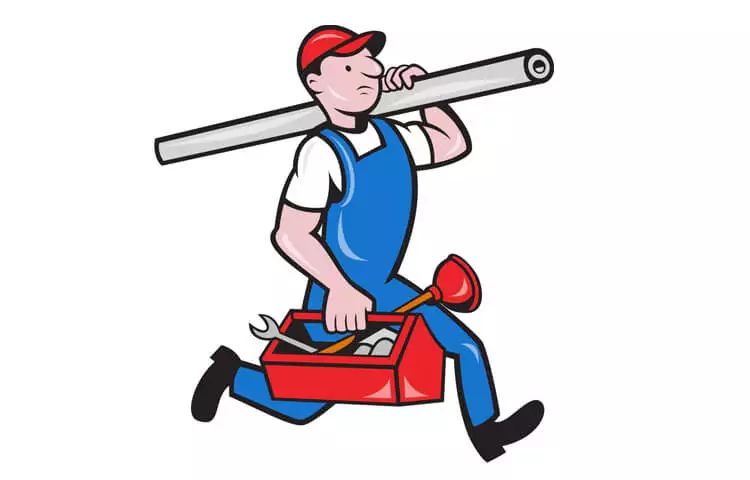
When can a tenant be denied pipe replacement?
There are several legal situations when a management company may refuse to replace a sewer riser in an apartment:
- If the applicant has debts on utility bills. Here, the management company has the right not to carry out work (except for the elimination of an emergency) until the debt is paid in full.
- If the owner of the apartment decides to independently replace the sewer riser in his apartment, outside the schedule of house maintenance work.
- If the homeowner previously changed his part of the sewer riser himself.
We recommend that you read: How do plastic air ducts work in ventilation systems?
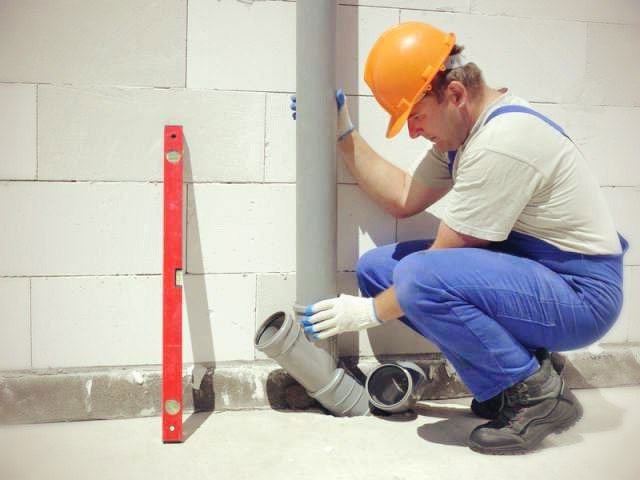
Note! Work to replace pipes in an apartment, carried out without the approval and control of the management organization, relieves it of responsibility for further maintenance of this area.
Heating system risers belong to the common property of the owners of apartment buildings
It is indicated that, according to paragraph 6 of the Rules for the maintenance of common property in an apartment building, approved by Decree of the Government of the Russian Federation of August 13, 2006 N 491, the common property includes an intra-house heating system, consisting of risers, heating elements, control and shut-off valves, collective (common house) thermal energy metering devices, as well as other equipment located on these networks. Thus, an in-house heating system is a set of risers, heating elements, control and shut-off valves, a collective (common house) heat energy meter, as well as other equipment located on these networks.
According to the position of the Supreme Court of the Russian Federation, equipment located in an apartment building can be classified as common property only if it serves more than one residential or non-residential premises. Heating elements (radiators) of an intra-house heating system serving only one apartment, including those having shut-off devices (shut-off valves), the use of which will not entail a violation of the rights and legitimate interests of other owners of the premises of an apartment building, are not included in the common property.
Who should change the risers?
Timely replacement of the sewer riser will prevent negative consequences and emergency situations that may arise if it fails.
Communications are considered common property. The rules and procedure for its maintenance are regulated by Government Decree No. 491 of August 13, 2006.
The norms of the Civil and Housing Code also apply to common property.
In Art. 190 and 192 of the Civil Code of the Russian Federation indicate who should change the sewer riser . Responsibility for the maintenance of common property rests with the management company.
In this case, the costs of repairing or replacing communications are borne by the residents of the apartment building.
Apartment owners receive monthly receipts for utility bills. These amounts include contributions for repairs and maintenance of communications.
Therefore, the management company should not take money from residents again. Such actions will be considered illegal.











